
If you’re doing ABM on LinkedIn, being able to measure advertising impact at the company level for each campaign isn’t a luxury, it’s a necessity.
Yet, that’s exactly where most marketing teams hit a wall, despite using multiple platforms and tools.
In this guide, we’ll break down why built-in options like your CRM or LinkedIn Campaign Manager fall short when it comes to LinkedIn advertising impact measurement, and why even IP-based deanonymization tools don’t go far enough. We’ll also explore how ZenABM closes those critical gaps.
Here’s why conventional tools can’t give you accurate LinkedIn advertising impact measurement at the company level — even when used in tandem:
Until the “Companies” tab rolled out in 2024, LinkedIn Campaign Manager had little value for ABM.
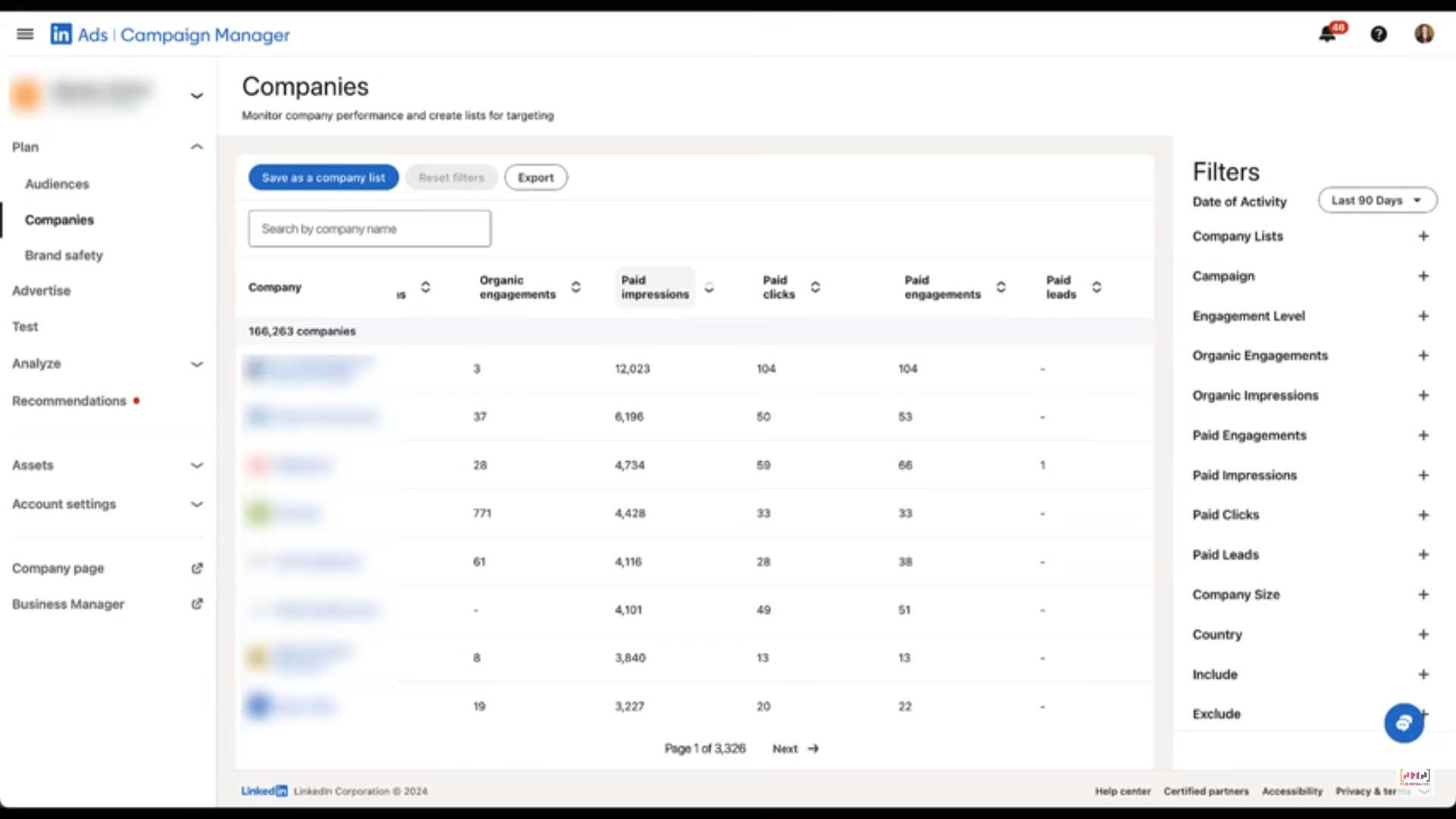
Now it offers company-level stats like impressions, clicks, engagements, and leads — including organic metrics and a combined engagement score.
While that sounds like progress, it still doesn’t solve the core issue.
The insights are bundled at the ad account level. There’s no visibility into which companies interacted with which individual campaigns or ads.
For ABM teams juggling multiple parallel campaigns — each with different creatives, goals, formats, and targeting — this lack of granularity is a dealbreaker.
These campaign differences often include:
Without campaign-level, company-specific engagement data, you’re flying blind. You can’t uncover which messaging worked, analyse performance, or assign credit where it’s due — like in this Userpilot campaign structure:
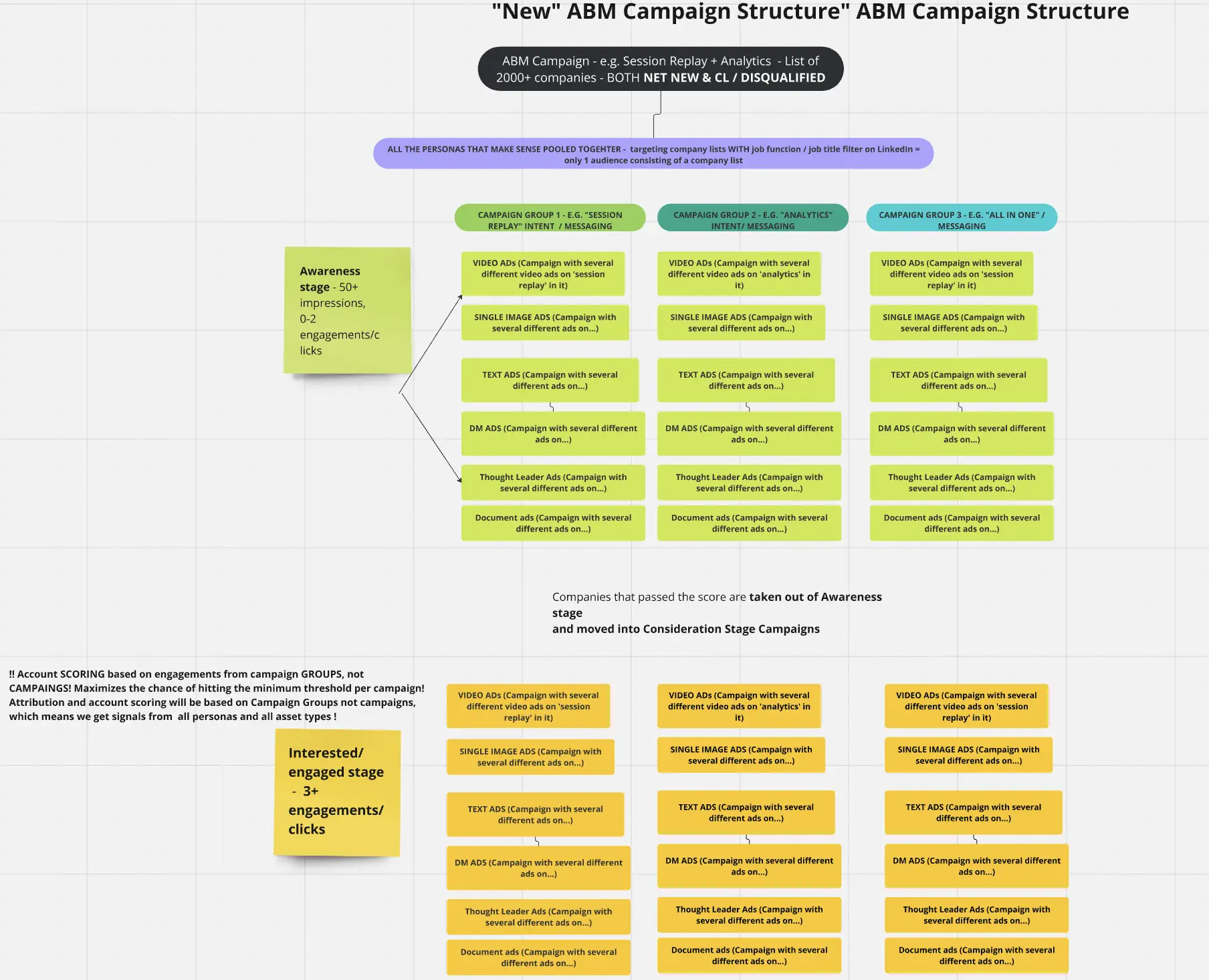
In setups like this, a rolled-up view just won’t cut it. What you really need is campaign-by-campaign metrics by company — impressions, clicks, and engagements — broken down by group or initiative.
Why is that critical?
Many marketers connect LinkedIn ads to platforms like HubSpot — for instance, this HubSpot integration pulls campaign-level stats into the CRM’s ads tool:
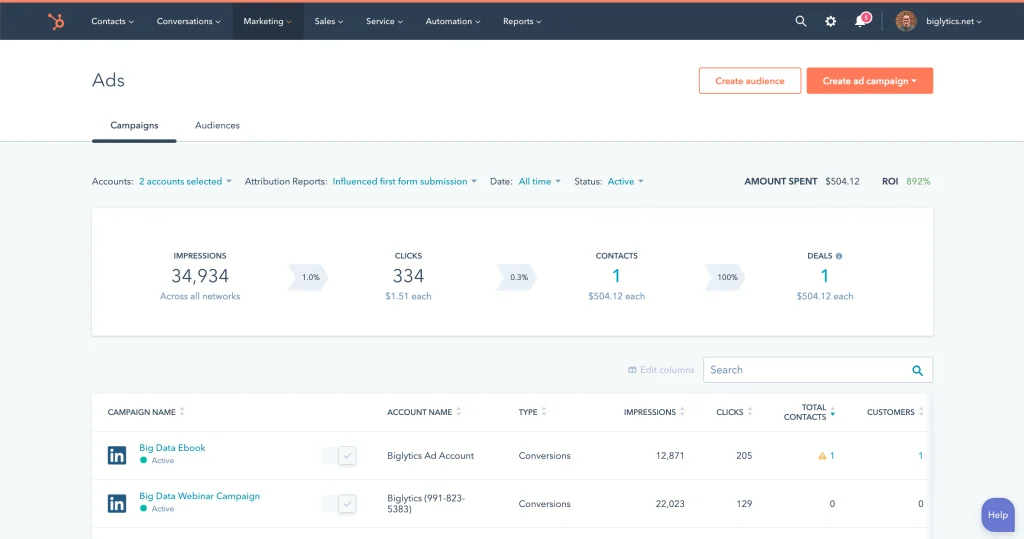
But the company-level breakdown is missing entirely.
You can see clicks, impressions, and cost per campaign, but not which companies engaged. That gap makes it impossible to tie engagement back to revenue influence or build true ABM plays.
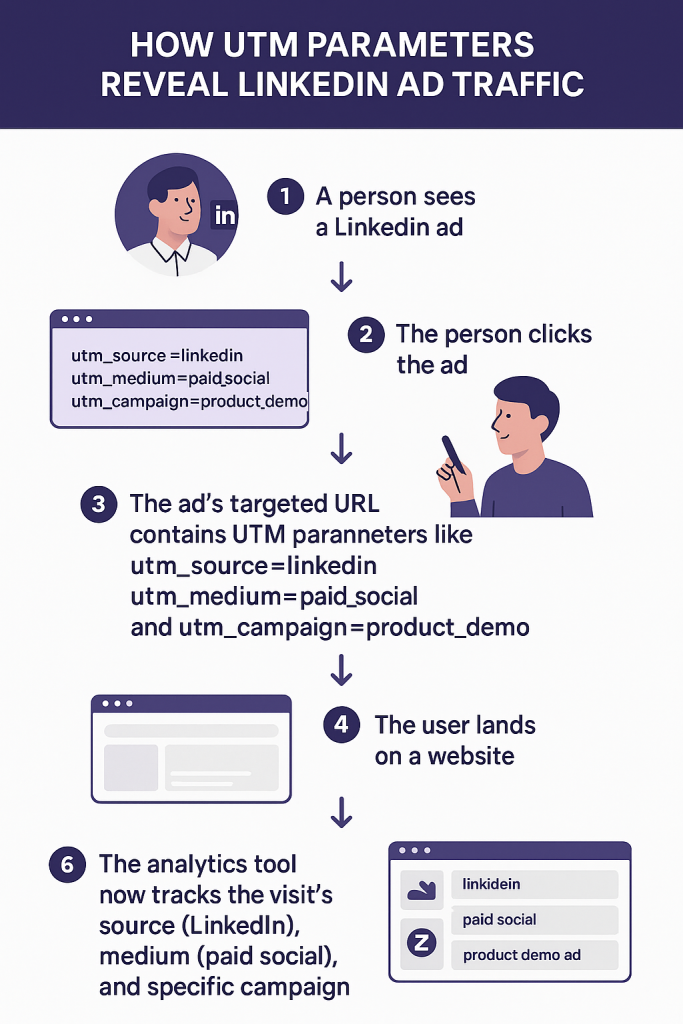
Another popular method is setting up a dedicated domain or tagging URLs with UTMs to capture traffic from LinkedIn ads.
Teams then run deanonymization software to identify visiting companies.
But under the hood, these tools rely on one method: IP-to-company matching using third-party databases, which is riddled with flaws:

The result? At best, these tools succeed around 40% of the time:
And real-world examples highlight how bad the miss rate is:
“The accounts we were targeting simply wouldn’t show up in any website visits, even though we knew they landed on the landing pages for the ABM ads we created specifically for them.
How do we know? We’ve actually set up a separate no-index domain for our ABM ad campaigns to be sure 100% of the traffic landing there is our ‘target accounts’. And sadly, from the ~300 visitors to a certain page path on that website, in 90 days, Breeze Intelligence (based on Clearbit’s API) identified only 1 company… ourselves!”
-Emilia Korczynska, VP of Marketing, Userpilot
Plus, this method depends entirely on clicks. If a buyer views your ad but visits your site later through a different channel, the engagement won’t be tied back to LinkedIn at all.
Bottom Line: LinkedIn Campaign Manager only gives rolled-up company stats. HubSpot shows campaign data, but without the companies. Deanonymization tools are error-prone and click-dependent. If you want to truly measure LinkedIn advertising impact per campaign, per account, and per ABM initiative, you need a more robust solution.
Sure, you can use the LinkedIn Conversions API, Insight Tag, or HubSpot’s native tools with UTMs to track LinkedIn traffic. But tracking company-level impact is a different story.
Even with CAPI or Insight Tag, if a user clicks an ad and fills out a form later, or in a new session, the attribution often breaks.
HubSpot’s attribution engine *can* connect the dots across sessions, but only if cookies stay intact — which is increasingly unreliable with third-party cookies being phased out.
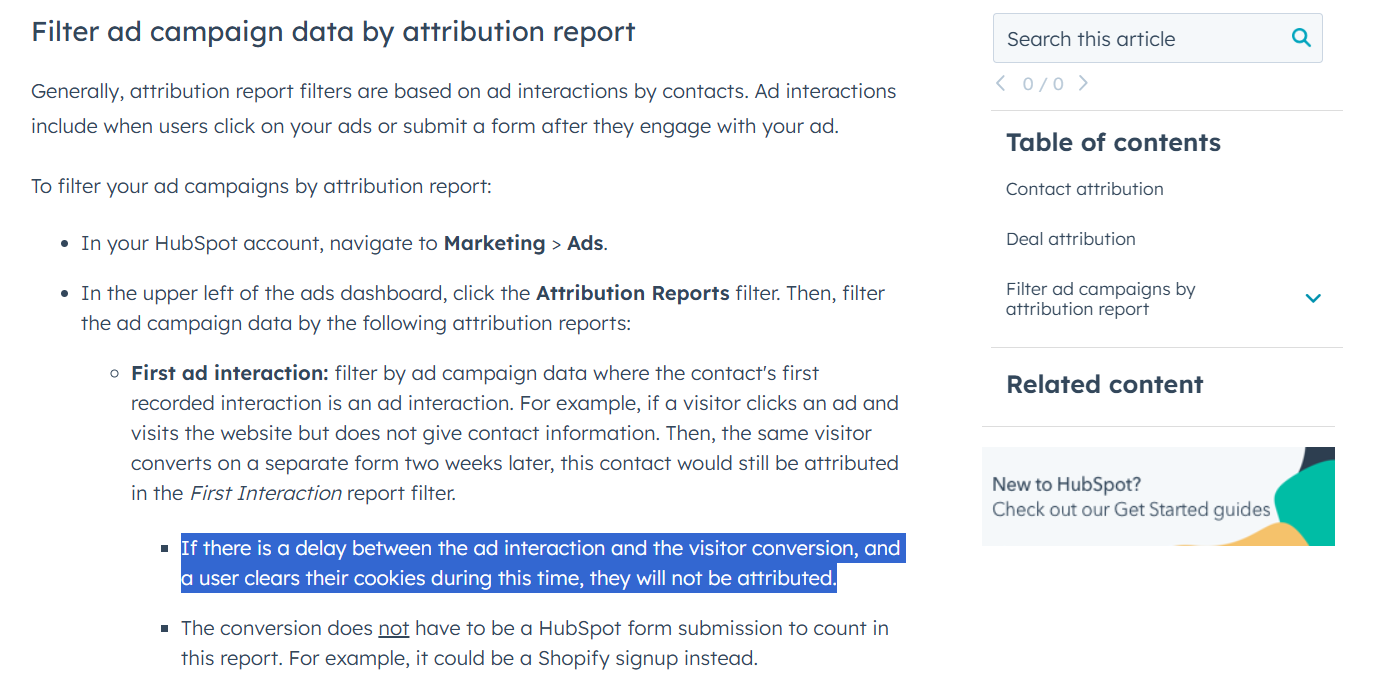
Even in a perfect setup, two major challenges remain:
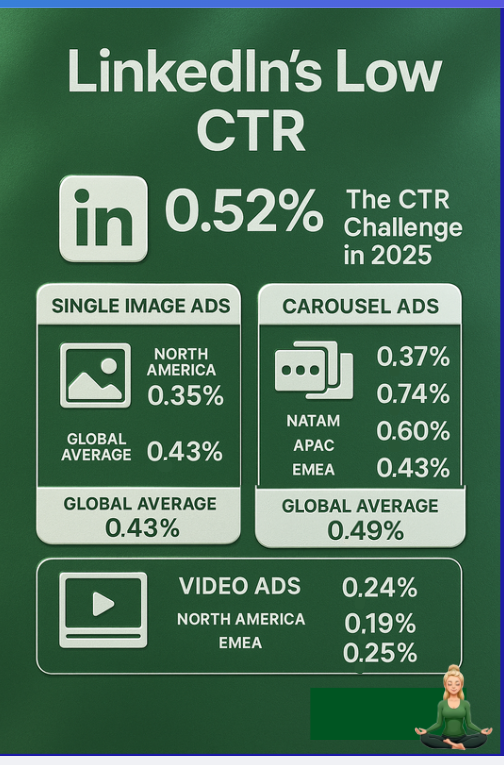 So a prospect viewing your ad and later arriving via search or direct is *very* common.
So a prospect viewing your ad and later arriving via search or direct is *very* common.Bottom Line: Even if every cookie worked and every form was filled correctly, you’d still miss companies that didn’t click your ad but converted later. For LinkedIn, which thrives on impressions and passive engagement, click-based tracking alone is fundamentally flawed. To do ABM right, LinkedIn advertising impact measurement requires company-level view-through attribution across every campaign.
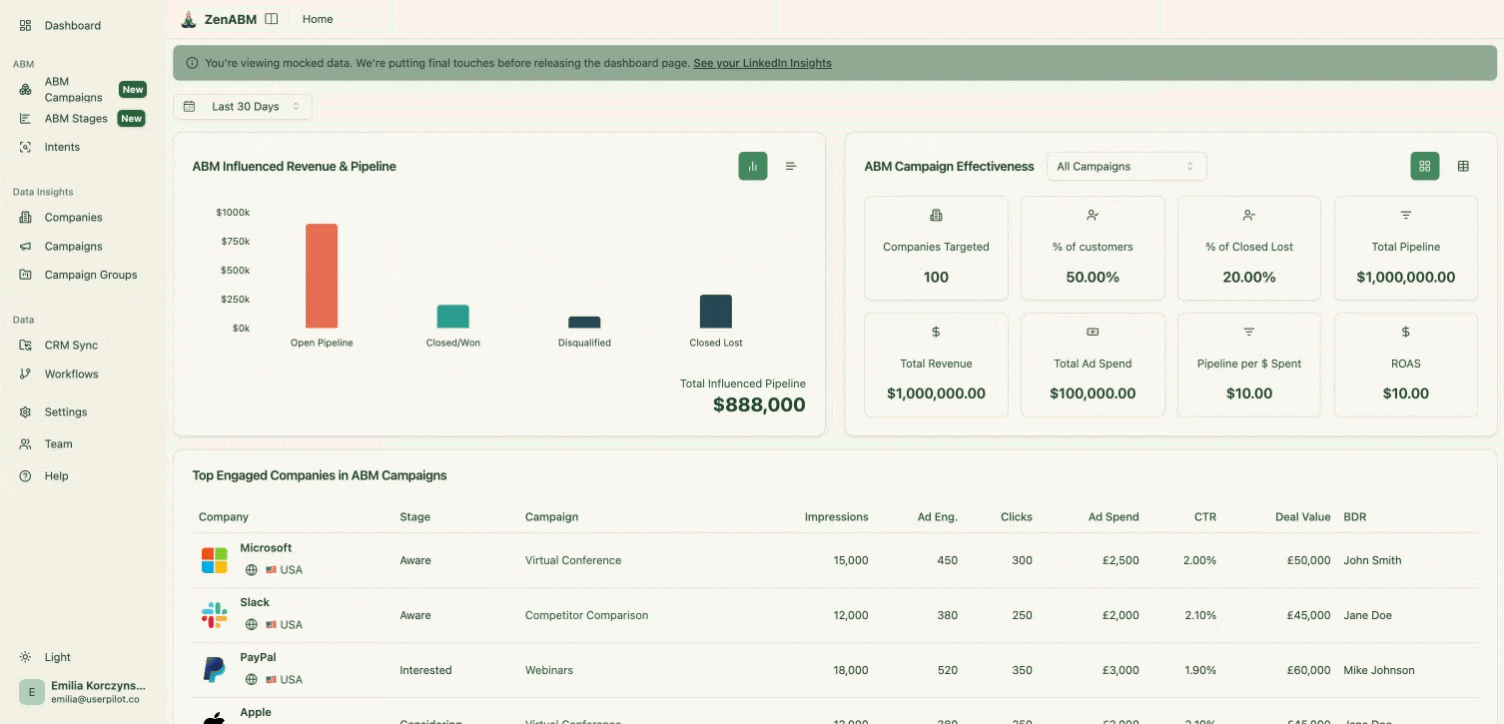
Here’s how ZenABM helps you move beyond surface-level reporting and measure LinkedIn ad performance across companies, campaigns, and your ABM funnel:
ZenABM directly connects to the LinkedIn Ads API to pull verified, first-party engagement data, organized by company. You get detailed insights like impressions, clicks, CTR, spend, and total interactions for every campaign and campaign group.

Once ZenABM is integrated with Salesforce or HubSpot, it automatically matches engaged companies to deals and reveals impact on your funnel through a clean ABM analytics interface:

It also tracks essential ABM metrics like:
You can label campaigns or ad groups based on their underlying intent — whether it’s tied to features, pain points, or solutions. ZenABM then groups companies according to what messaging they engage with most.
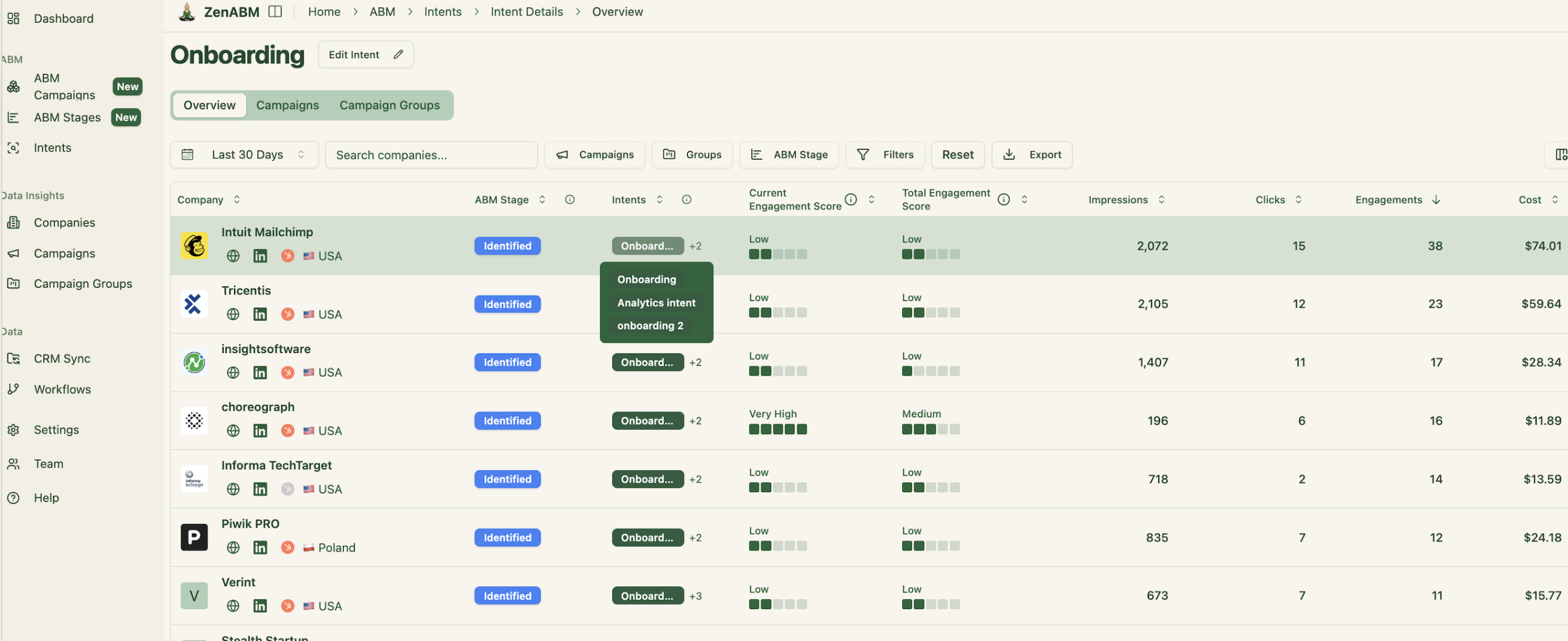
ZenABM automatically sorts accounts into ABM funnel stages using ad interactions plus CRM activity — and gives you full control over what counts as “Awareness,” “Interest,” etc.

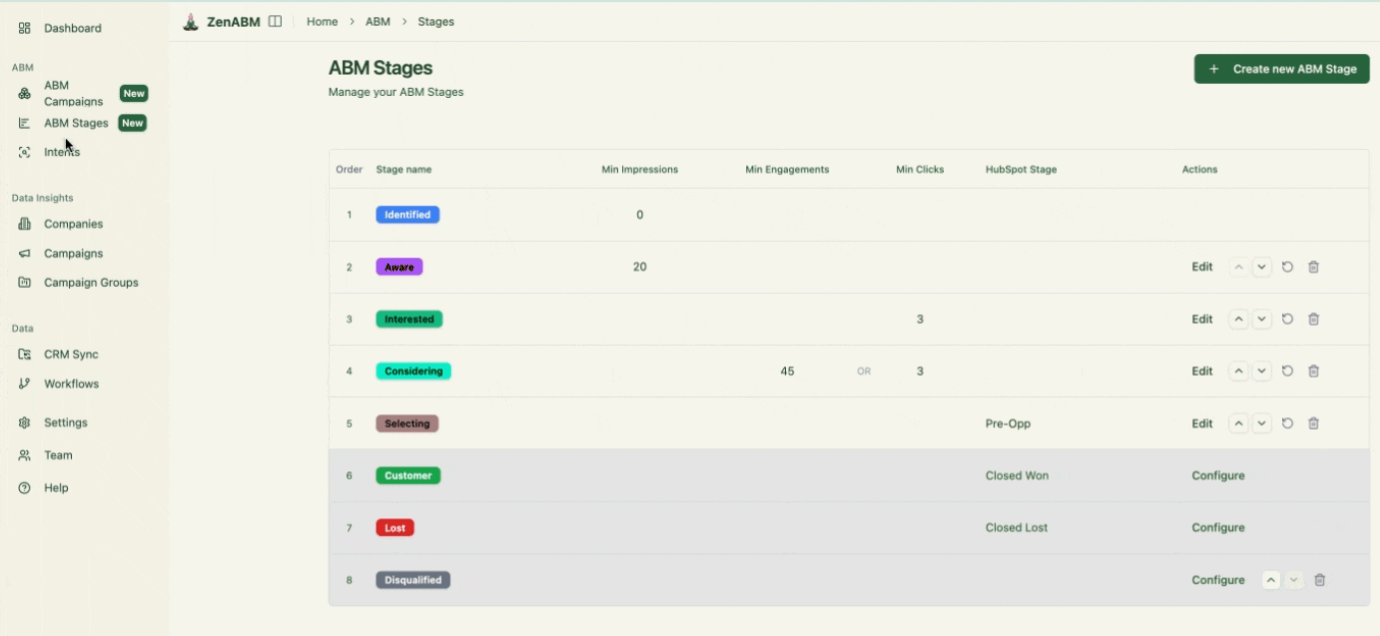
ZenABM tracks two scores that help your team prioritize outreach:

ZenABM automatically writes back key engagement data — from impressions and click-throughs to funnel stages and scores — into Salesforce or HubSpot. It even auto-assigns accounts to BDRs when they hit your custom thresholds.
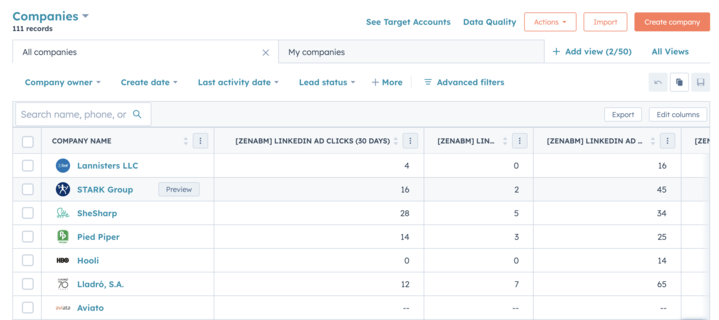


LinkedIn Campaign Manager rolls metrics up to the account level, while CRMs typically lack visibility into which companies engaged.
Tracking via CAPI, Insight Tag, or CRM pixels only reveals click-throughs, completely missing out on companies that saw your ad but visited later through other channels.
But in ABM, what truly matters is identifying which companies interacted with which specific campaigns — because that’s how you tailor outreach, prioritize leads, and tie engagement back to revenue.
ZenABM makes LinkedIn advertising impact measurement actionable. You get per-campaign, per-company insights, automated BDR assignment, dynamic engagement scoring, intent-based tagging, and seamless CRM syncing — all without writing a single line of code.